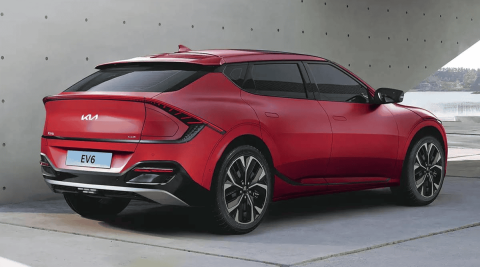Gujarat Government Reduces Tax on Electric Vehicles to 1%; Other States May Follow
In a strategic fiscal maneuver aimed at revitalizing electric vehicle (EV) adoption, the Gujarat government has reduced the RTO (Regional Transport Office) tax on EVs from 6% to just 1%, effective until March 31, 2026. Announced under the Gujarat Budget 2025–26, this dramatic tax cut is expected to lower the cost of electric vehicles by Rs 30,000 to Rs 1 lakh, depending on the model, providing a fresh thrust to the state’s green transportation agenda. Following a year of sluggish EV sales post-subsidy withdrawal, this policy is poised to reignite consumer interest and position Gujarat once again at the forefront of India’s clean energy transition.
Major Tax Relief to Catalyze EV Adoption
Effective immediately, buyers in Gujarat registering their EVs via the Vahan 4.0 online portal will benefit from a substantial 5% reduction in RTO tax, which now stands at just 1% of the vehicle’s ex-showroom price.
For an EV priced at Rs 10 lakh, the RTO tax has dropped from Rs 60,000 to Rs 10,000, saving buyers a straight Rs 50,000.
This change is applicable for both two-wheelers and four-wheelers, potentially saving entry-level scooter buyers around Rs 30,000 and car buyers over Rs 1 lakh, based on the model’s cost.
The policy is explicitly designed to boost affordability, reduce upfront EV costs, and increase transparency through mandatory digital registration, which ensures real-time monitoring and minimizes procedural delays.
Policy Response to Falling EV Sales
The tax cut arrives at a pivotal moment when EV sales in Gujarat had plunged by nearly 50% in the aftermath of subsidy rollbacks last year. Previously, state subsidies included:
Rs 25,000 for electric two-wheelers
Rs 1.5 lakh for electric four-wheelers priced under Rs 15 lakh
Once these subsidies were withdrawn, consumer momentum stalled, with hesitant buyers grappling with high upfront costs. By targeting the registration tax, Gujarat’s new policy provides direct, broad-based financial relief to all EV buyers—an approach that may prove more durable and scalable than subsidies.
SGCCI’s Timely Push Adds Urgency
Just days before the official announcement, the South Gujarat Chamber of Commerce and Industry (SGCCI) had publicly urged the state to swiftly execute the tax cut. Their call to action was informed by:
Observations that Maharashtra’s tax relief policy had successfully spurred EV sales.
Concerns that Gujarat was losing its early-mover advantage in the EV ecosystem.
An appeal to align policy momentum with budget commitments to prevent further erosion in sales.
SGCCI President Vijay Mewawala highlighted that immediate implementation could reverse the slowdown in adoption and restore Gujarat's leadership status in India's electric vehicle landscape.
Environmental and Economic Gains in Sight
The state’s move is not merely a budgetary adjustment but a strategic climate and infrastructure intervention. Analysts and industry insiders view this as a two-pronged growth opportunity:
Environmental Impact: The tax cut supports India’s broader decarbonization goals by encouraging a shift away from fossil-fueled mobility. With air quality worsening in urban zones, this transition is both urgent and necessary.
Economic Multiplier: The policy is expected to revive demand across the EV value chain, from OEMs (original equipment manufacturers) to charging infrastructure providers, and create momentum for green jobs and investments.
Gujarat already hosts a range of EV manufacturers and component suppliers. By enhancing affordability, the state increases the addressable market and creates room for volume-driven manufacturing efficiencies.
Registration via Vahan 4.0: A Move Toward Digital Governance
One of the key caveats in the new policy is that the 1% RTO tax benefit will be extended only through registrations made on the Vahan 4.0 portal. This stipulation:
Promotes e-governance and reduces manual bottlenecks
Ensures policy compliance tracking and enhances fiscal accountability
Enables the state to gather robust data on EV trends, helping in future policy planning
Such integration of policy with technology underlines Gujarat’s intent to be both digitally forward and environmentally conscious.
Investor and Industry Reaction: Cautious Optimism
Market participants and industry stakeholders have responded positively to the announcement. While dealerships anticipate an immediate rise in showroom inquiries, the real test will lie in sustained conversion rates and how rapidly financing institutions align their products to the evolving EV affordability profile.
EV manufacturers, meanwhile, are watching closely to assess whether other states will replicate Gujarat’s model, especially given the interstate competition for clean tech investments.
What Comes Next: Challenges and Strategic Follow-Through
Although the tax reduction marks a significant step forward, experts caution that several complementary actions are required to make EV adoption truly mainstream:
Expand charging infrastructure across rural and semi-urban areas
Introduce battery swapping stations for two- and three-wheelers
Support local manufacturing of lithium-ion cells to reduce dependence on imports
Incentivize fleet conversions, particularly in public transport and logistics
Moreover, for long-term success, the government must communicate its commitment to policy continuity, to assure stakeholders that EV promotion is a sustained mission—not a budget cycle experiment.
Gujarat’s Policy Shift May Reignite India’s EV Momentum
By slashing the EV RTO tax from 6% to 1%, Gujarat has made a bold, measurable commitment to economic decarbonization and green mobility affordability. This decision comes at a time when the industry needed a booster shot, and if the early indicators prove correct, it may set off a domino effect of policy reforms across other states.
